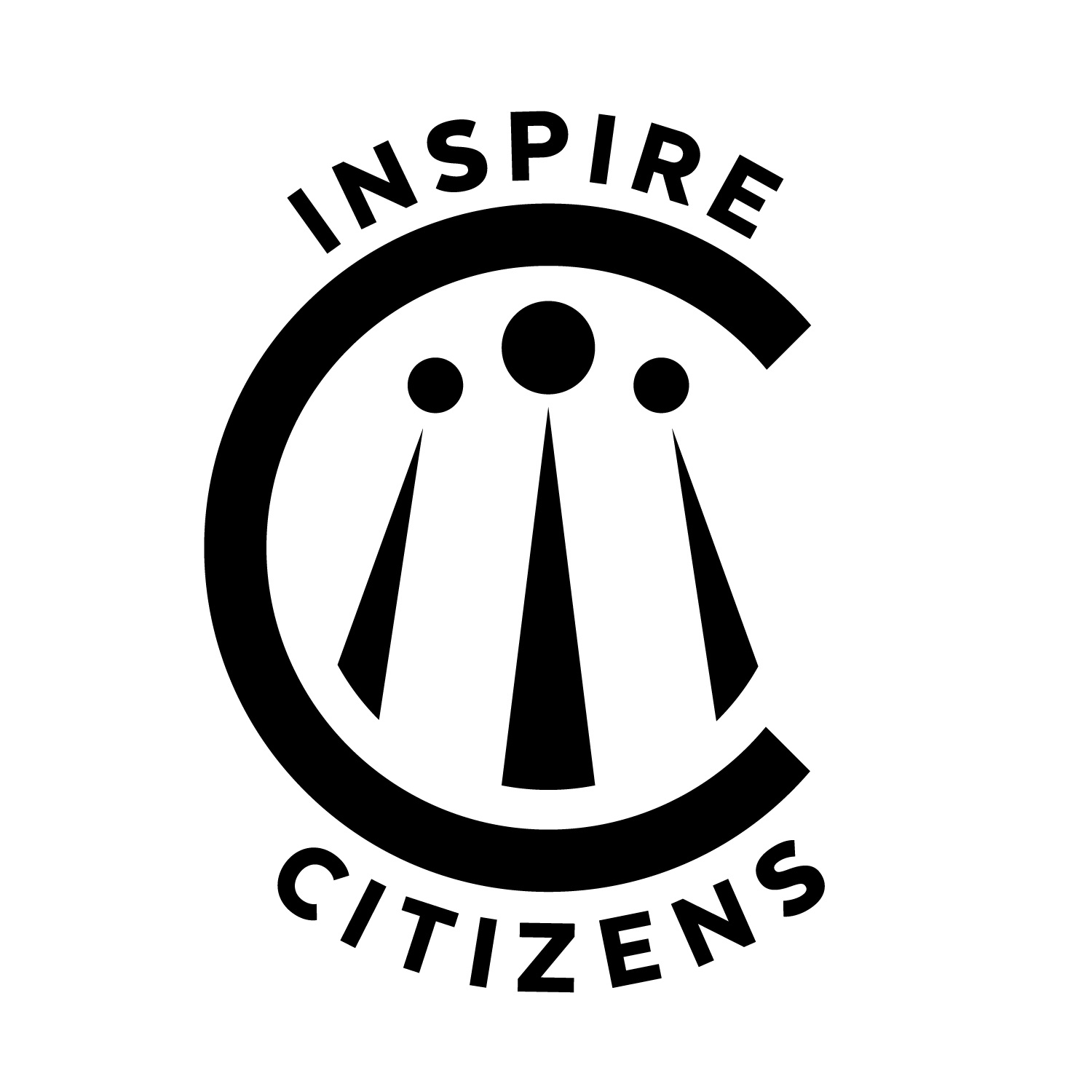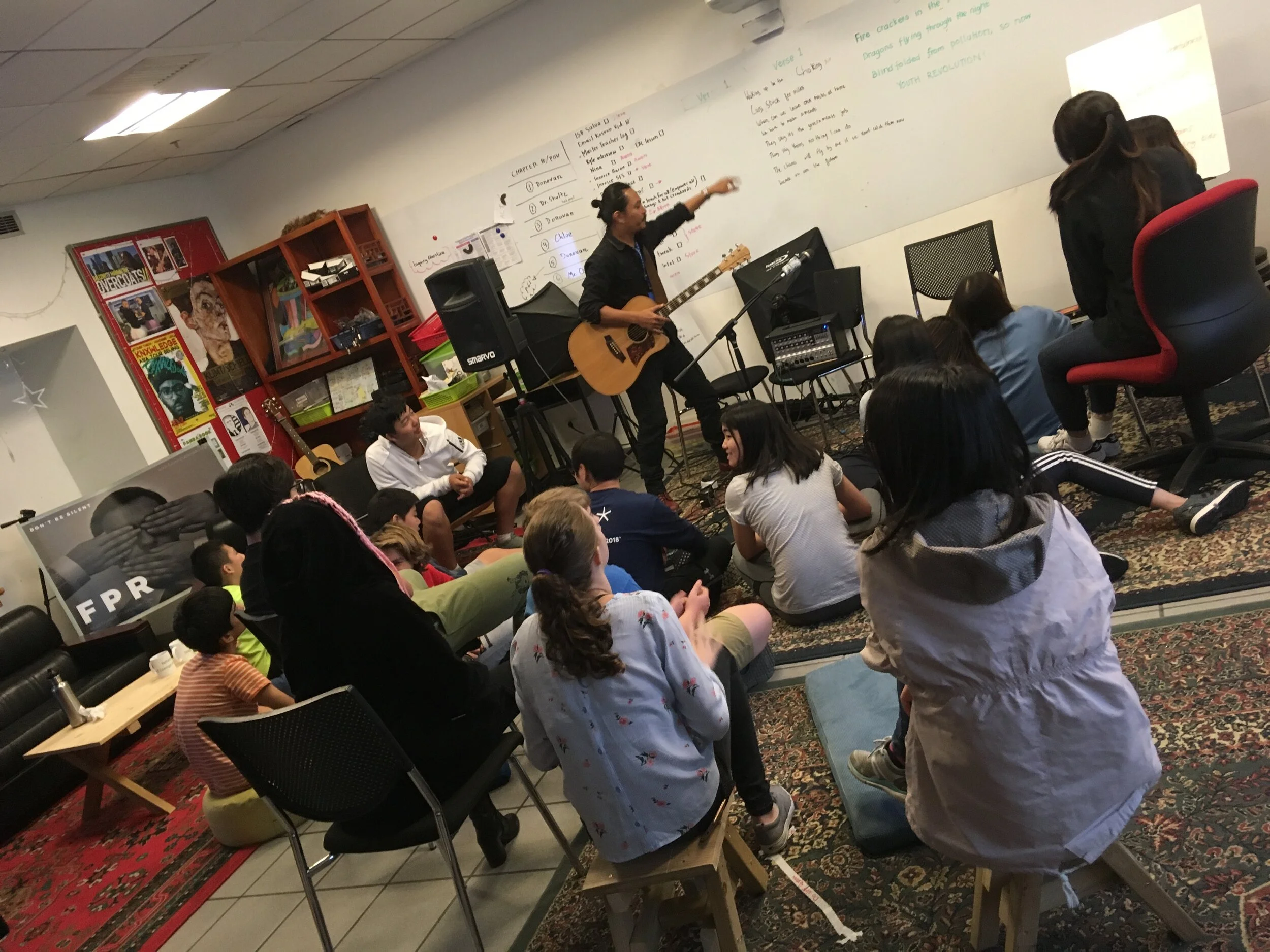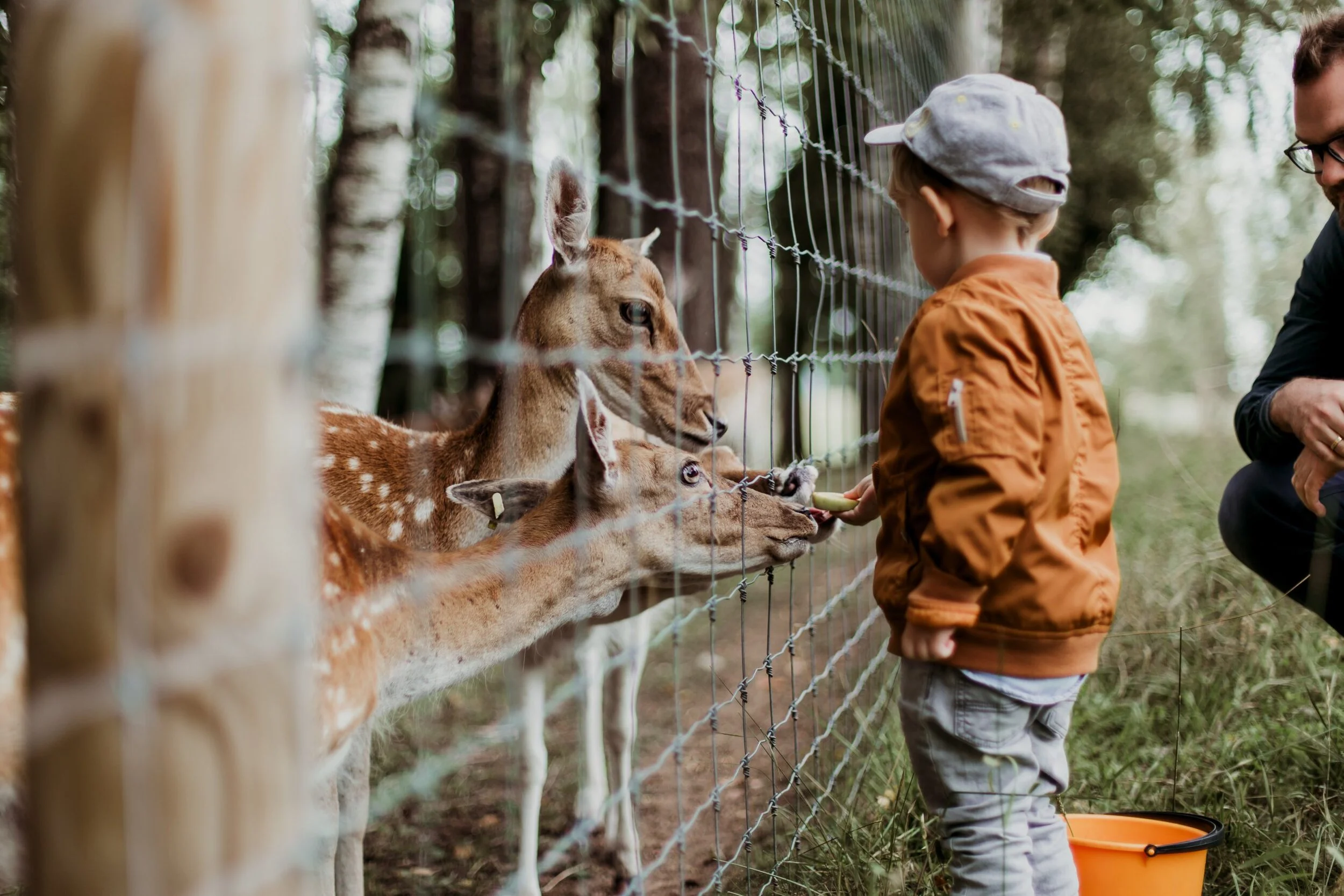Constellation Mindset: Be Prepared to Be Needed. Be Prepared to Need Others. Be Prepared to Change. (Gr5)
We need greater interdependence and flexible leadership in a volatile and uncertain world. Therefore, even as early as primary school, students can experience how communities and organizations designed as constellations are dynamic and flexible networks. Each member of the team is able to both stand out and fit in at the same time, to form something greater. When leaders find the courage to distribute rather than hoard power, creativity multiplies, trust deepens and inclusivity expands.
In 2021, we have more work than ever to do in implementing and attaining the Sustainable Development Goals and targets. These goals and targets have the power to create a better world by 2030, by ending poverty, fighting inequality and addressing the urgency of climate change. Guided by the goals, it is now up to all of us, governments, businesses, civil society and the general public to work together to build a better future for everyone.
Read More
Tiny Classroom Concerts: Give a Social Movement a Soundtrack
“Protest songs give a social movement a soundtrack. From a songwriting perspective, they help you connect with your society by engaging with what you want to change, whether it be the minds of the people who disagree with your ideals, or the complacency of those who agree with you, so you can energize them into action
It’s easy to feel like there’s more you could be doing right now. Besides marching, reading, and donating, using that anger to write a protest song is a way that musicians can play their part. And creating art during this time is an important role in all of this.” - Berklee Online
Read More
Taste Buds: Food Design Thinking
MYP students meshed Empathy to Impact with food design, using this process to help generate ideas and final food concepts that were grounded in research, culture, sustainability and community action. The influence of decisions taken in a design stage radiates throughout the whole food system, from farm to table. To achieve a circular economy for food, design thinking is a critical element.
Read More
Kindergarten Engineers: Design and TV Studios for Imaginative Impact
Students engaged in explorations with Vex Robotics to build simple machines and apply and transfer their learning. While prototyping, creating models and drawings, and using problem-solution-impact sentence frames, students designed simple machines that could theoretically help to solve the issues. In preparation for the TV show, students looked at ISTE Global Collaborator standards, practiced making videos, recording videos, editing videos, adding voice overs to pictures, and filming each other in a DIY TV studio.
Read More
Grade 4 Theater: The Future is Ours
Students were not asked to solve the world’s problems, but to imagine the future they want and need. They were each invited to find the power within themselves to use theater to express creative and poignant foresight, inspiring others through screenwriting, direction and performance. Students devised the scripts and narration, students planned the production including visuals, and sound effects, students applied their workshops to begin to imagine and shape real visions of a better future.
Read More
Launch an IC Futures Media Member Station
Think deeply with your students about what you will need to be able to do to produce excellent and poignant journalism and storytelling: Mentors and partners, developing a mastery of language arts, technology integration skills, civic literacies, and interdisciplinary knowledge and skills will form a baseline but will also need agility depending on the context and direction of each story or production.
As you outline the goals for your member station’s impact, consider building an internal platform to house productions and publications while sharing your top stories and features with the Inspire Citizens Futures Media network. Importantly, think about your community assets and who your partners could be, who or what in your community could be featured as a story or investigation, and who is ultimately your focus audience.
Read More
Window: Creating the Text and Audiobook for a Picture-Only Book on Concepts of Exponential Change & Sustainable Development of Cities
Grade eight EAL students developed a nuanced interpretation of the book Window, a picture-only book about urbanization, development, and biodiversity loss seen through the eyes of the main character’s first twenty-four years of life. Students wrote original text, recorded a full cast reading for the thirteen pictures, and performed their interpretation for a grade four classroom.
Authentic writing and performance has high levels of literacy growth and engagement. In this case, students used the deconstruction of visual representations to craft storytelling related to global issues of sustainable cities, urbanization, and biodiversity, highlighting the power of embedded concepts of sustainability.
The quality and intentionality of expressive reading grew by leaps and bounds when authentic and meaningful publishing and deeper purpose was attached to a project endeavor.
Read More
Futures Thinking and Literacy: Writing Screenplays for Dystopian Fiction
In Steve’s middle school EAL classroom, students engaged with language arts within an interconnected framework of Sustainable Development Goals, MYP Global Contexts, SIOP framed content and language objectives, and WIDA literacy rubrics. The learning goal is rooted was rooted in empowering diverse student populations via global citizenship, multilingualism, multiculturalism, authentic literacy, and real-world projects and publications.
In dystopian screenwriting and theater or film production, students embark on authentic publication and inquiry-based literacy work — collaborating to create meaningful writing and technology-based projects that generate transformative learning and provocative solutions for global and local issues.
Read More
Innovate for Impact
As a culminating action of unit on the history of innovations and the impacts innovations have on societies, students were given the challenge of designing a future innovation to positively impact their local community given our current challenges and needs in 2020-21.
Students applied and transferred their knowledge, skills, and understandings, collaborated virtually, and designed a product to meet an identified need. They ran impact analyses on their innovations, and pitched their products to a series of SFS administrators and staff members as a means of direct research, advocacy, and taking action to positively impact the local community.
Read More
Interdisciplinary Exploration and Design of Future Zoos
By launching the unit with an exploration of the significance of conservation and its importance for global biodiversity and ecosystem health, students applied their MYP Math and Science research and design skills, knowledge, processes, and strategies to create digital blueprints of more ethical and humane conservation areas where animals could thrive.
Students researched endangered species, their habitats, food chains, adaptations and survival needs, and as ‘animal researchers’ designed a habitat that would allow these species to thrive. Students then took a map of the SFS campus, measured the area of its complex spaces, and matched the spatial requirements to the survival requirements of their chosen animal.
Although the design of the conservation area was theoretical, the application of skills into advocacy for sustainable development mimicked thinking like animal conservationists, zoologists, and architects working towards addressing the pros, cons, and roles of zoos in the future of ecosystems and biodiversity.
Read More
Community Well-Being Interdisciplinary Unit
Inherent and fundamental to Empathy to Impact and the IB Program is the ability to transfer interdisciplinary knowledge to real-world contexts and create opportunities for students to take action. Often, schools struggle to identify what holistic wellbeing means to a community and the interconnected nature of the different domains of wellness and the interdisciplinary nature of learning.
students identified a focus area of well-being that they wanted to investigate. They researched about the biological elements of well-being issues relevant to their community, while learning how to build empathy with their target audience, anticipate various viewpoints, and appeal to logic, emotion, and authority systems.
Students created a variety of media pieces, consistently reflected on processes, demonstrated their intentional application of content information, and engaged with community action and feedback.
Read More
Mandarin Environmental Advocacy and Literacy
Students used their Mandarin language skills and applied them by making differentiated learning resources for a younger Mandarin audience at the school. They personalized the resources to the interests and language skills of the students, culminating their project in a group reading and sharing of their resources. The younger students added these resources to their personal and class libraries afterwards.
In the process, the younger students were surveyed about their Chinese language proficiency, about their personal interests and about their background knowledge of environmental issues, and with this information HS Mandarin students followed Empathy to Impact as a pathway to the MYP Service as Action planning cycle to create personalized learning resources for their identified learner.
Read More
PYP Exhibition: Grade Five Art for Impact
For the past two years, grade five teachers and learners at Western Academy of Beijing have partnered with Inspire Citizens on combining the deep learning inherent in the PYP exhibition with transdisciplinary themes of personalized artistic expression and systemic issues related to sustainable development, well-being, and equity.
Students continued to apply approaches to learning and monitor transformative skills and dispositions through lenses of thinking and designing like a researcher, artist, curator, educator, and advocate in creating immersive artistic spaces for audiences to engage and explore complex issues.
Read More
"Get Inside" Empathy to Impact
Empathy to Impact helps teachers and learners co-design meaningful interdisciplinary units and projects through physically engaging with systems thinking in order to enhance pre-existing approaches to design, service as action, inquiry, and project-based learning experiences. Working together through an Empathy to Impact snapshot, educators can promote meaningful student-centered learning for critically, creatively, and empathetically addressing:
What do I care about and why?
How can I become more deeply aware and credibly informed?
How can I apply disciplinary skills and thinking, technology, and language?
How can I take informed action and have a positive impact on an internal, local, or global community?
Read More
Expect the Unexpected: Community Street Photography
Photo!Bomb Street Photography: Look for and embrace the unexpected, candid moments of diverse lives. Develop an ability to find a sense of meaning within the mosaic of stories, faces, buildings, and movement in the streets. Ignite your creativity, for everybody has a story.
Read More
Community Makerspaces: Sustainable Design Thinking for Social, Environmental, and Community Impact
As part of an interdisciplinary unit examining concepts related to sustainable design as future-focused solutions, students engaged in an Empathy to Impact project in which they explored and acted for community well-being through lenses of energy, food, imagination and play on campus.
Read More
Social Justice Devised Digital Theatre
The act of exploring critical social justice issues helps prepare students to better understand and take informed action in a diverse global society. Using theater to create a more just and harmonious world is a powerful learning experience for urgent conceptual ideas that can transfer across disciplines.
Read More
Empathy to Impact: A Transformative System for Interdisciplinary Unit Design
In designing learning experiences that embrace a world that is dynamic and ever-changing, Empathy to Impact sparks interdisciplinary teaching and learning that amplifies a deeper awareness of the meaningful connections which exist among disciplines, oneself, communities, nature, and our place in a complex world and time.
Read More
Printmaking: What Do you Want Others to See?
In Art for Impact learning experiences, students develop transformative skills connected to the Empathy to Impact system for transformative learning:
Greater empathy through connecting to a community issue
Critical thinking through interpretation and research around mentor artists
Application of interdisciplinary skills and expressive communication in preparing an art piece and community exhibition
Resilience in having to adjust exhibition settings due to the pandemic and also in creating multiple drafts of prints to be capture the spirit of the artistic process and power of the advocacy component
Read More
We Are Constantly in a State of Becoming: New Ways of Seeing through Photography
Photography and art: We are constantly in a state of becoming. We are constantly changing how we see the world, how we make photos, and whatever we find interesting. We are constantly changing our tools, our processing methods, and our own visual acuity is in flux — some things become brighter in our eyes, some things more dim. We are becoming both more near-sighted and far-sighted at the same time. - Eric Kim
Read More




















